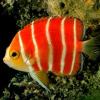-
Topics
-
Latest Update
-
0
Signal +1(909)6833845 buy dmt carts dmt vape pen in Australia
Vaping DMT makes it considerably more advantageous when contrasted with really illuminating it and smoking it. Vaping additionally makes DMT utilized significantly more carefully. Nobody needs to chance getting in a tough situation with the law, and utilizing a DMT vape cart can help cloud the mark scent that is radiated through ignition. Telegram(@john_smith4) email.. gblcleaners9@gmail.com Buy DMT Vape Pen - DMT Vape pens for sale - DMT for sale - Buy dimitri online Telegram(@john_smith4) email.. gblcleaners9@gmail.com DMT cart, DMT Vape Cartridge best DMT (Vape and Cartridge) 1mL, best DMT Vape and Cartridge, best DMT Vape and Cartridge in USA, buy DMT Cartridge, buy DMT Cartridge in USA, buy DMT Vape, Buy DMT Vape Cartridges Online, Buy DMT Vape Pen Carts for sale, Dimitri for sale, The Rogan, The Spirit Molecule DMT vape pens for sale at psychedelics store Dimitri, The Rogan, The Spirit Molecule Buy spirit molecule online, spirit molecules for sale Telegram(john_smith4 Skype:gblghb Signal: +1(909)6833845- australia
- buying mh light or led light
-
(and 1 more)
Tagged with:
-
0
Signal+1(909)6833845 Buy GBL GHB 3MMC For Sale in Australia
99.9% GBL Gamma-Butyrolactone GBL , GHB , BDO Alloy wheel cleaner Suppliers DBO Cosmetic GHB Corporation GHB-Shop Đai Viet TaiWan Ghb GBL, GHB GBL Motors GBL+ Med-pharma GBL MAN Gbl shopp American Chemical Society – Hawaii Local Section Nettoyeurs de roues Wheel Clean RB cars Center #GBL #GHB Skype: gblghb Whatsapp +1 (909) 683-3845 Skype: gblghb Email: gblcleaners9@gmail.com 99.9% GBL Gamma-Butyrolactone GBL Alloy wheel cleaner Supplier Skype: gblghb Signal +1 (909) 683-3845 Skype: gblghb Email: gblcleaners9@gmail.com 99.9% GBL Gamma-Butyrolactone GBL Alloy wheel cleaner Supplier -
-
-
-







Recommended Posts
Join the conversation
You can post now and register later. If you have an account, sign in now to post with your account.